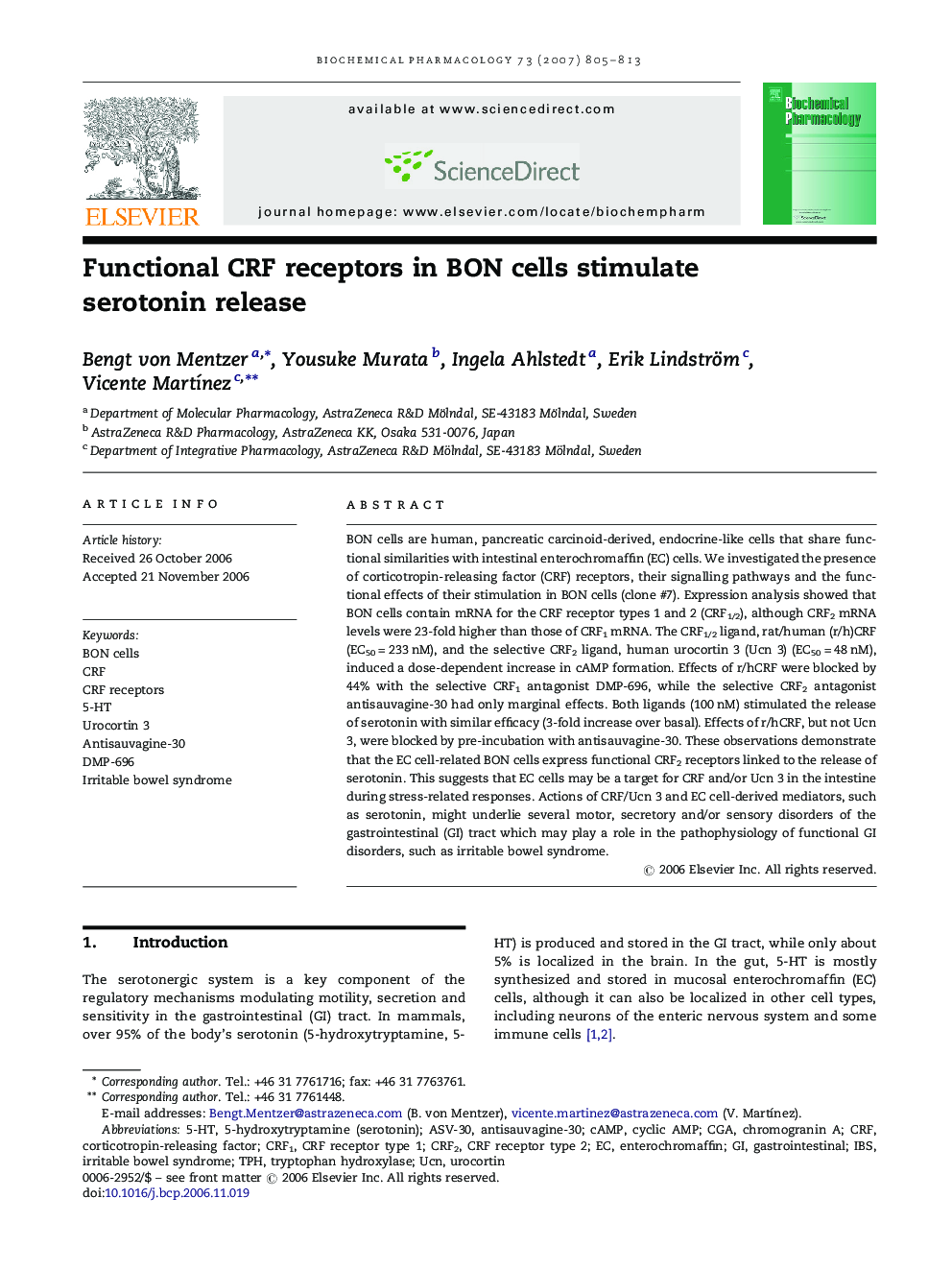| Article ID | Journal | Published Year | Pages | File Type |
|---|---|---|---|---|
| 2515058 | Biochemical Pharmacology | 2007 | 9 Pages |
BON cells are human, pancreatic carcinoid-derived, endocrine-like cells that share functional similarities with intestinal enterochromaffin (EC) cells. We investigated the presence of corticotropin-releasing factor (CRF) receptors, their signalling pathways and the functional effects of their stimulation in BON cells (clone #7). Expression analysis showed that BON cells contain mRNA for the CRF receptor types 1 and 2 (CRF1/2), although CRF2 mRNA levels were 23-fold higher than those of CRF1 mRNA. The CRF1/2 ligand, rat/human (r/h)CRF (EC50 = 233 nM), and the selective CRF2 ligand, human urocortin 3 (Ucn 3) (EC50 = 48 nM), induced a dose-dependent increase in cAMP formation. Effects of r/hCRF were blocked by 44% with the selective CRF1 antagonist DMP-696, while the selective CRF2 antagonist antisauvagine-30 had only marginal effects. Both ligands (100 nM) stimulated the release of serotonin with similar efficacy (3-fold increase over basal). Effects of r/hCRF, but not Ucn 3, were blocked by pre-incubation with antisauvagine-30. These observations demonstrate that the EC cell-related BON cells express functional CRF2 receptors linked to the release of serotonin. This suggests that EC cells may be a target for CRF and/or Ucn 3 in the intestine during stress-related responses. Actions of CRF/Ucn 3 and EC cell-derived mediators, such as serotonin, might underlie several motor, secretory and/or sensory disorders of the gastrointestinal (GI) tract which may play a role in the pathophysiology of functional GI disorders, such as irritable bowel syndrome.
